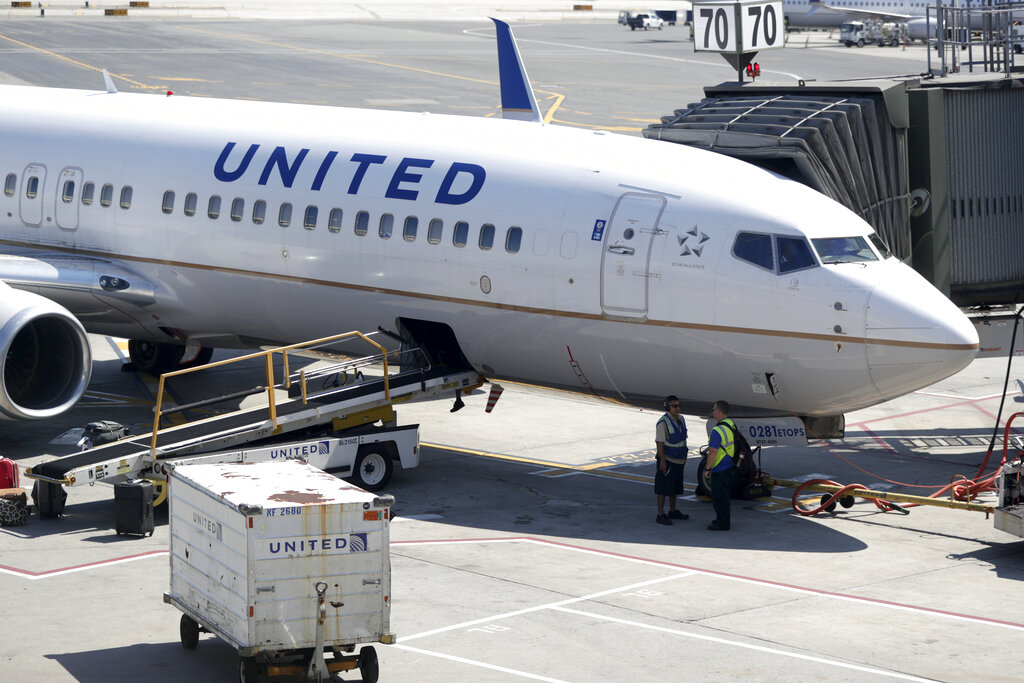FMT:
NTSB probes ‘stuck’ rudder pedal issue on Boeing 737 MAX flight
08 Mar 2024, 07:20 AM
The plane’s captain says the rudder pedals did not move in response to ‘normal’ application of foot pressure.

Three days after the incident, United conducted a test flight and was able to duplicate the reported rudder system malfunction. (AP pic)
WASHINGTON: The National Transportation Safety Board (NTSB) is investigating a United Airlines Boeing 737 MAX 8 flight last month that experienced “stuck” rudder pedals after it touched down on the runway for its landing, the agency said on Thursday.
The NTSB said in a preliminary report on the Feb 6 flight that the plane taxied to the gate at Newark Airport without incident and there were no injuries to the 161 passengers and crew.
The safety board reported the captain said that during the landing rollout, the phase just after touchdown, the rudder pedals did not move in response to “normal” application of foot pressure while attempting to maintain the runway centerline.
Boeing said it worked with United “to diagnose the rudder response issue… The issue was successfully resolved with the replacement of three parts and the airplane returned to service last month.”
Boeing said this was the only report of this issue in the 737 MAX fleet. The rudder pedal system is identical to the prior generation 737 NG and the planemaker said it was aware of two similar occurrences in 2019 on NGs that were resolved through component replacements.
United said the parts at issue are present only in nine United aircraft originally built for other airlines. “We’ll continue to work with Boeing, the NTSB and the FAA on next steps for these aircraft,” the airline said.
The Federal Aviation Administration referred questions to the NTSB.
Boeing has been under scrutiny in recent months after a Jan 5 mid-air blowout on another plane model, the 737 MAX 9. Last month, the FAA formally mandated inspections in 737 MAX airplanes for loose bolts in the rudder control systems after the planemaker recommended them in December.
The NTSB report said the captain said that in the MAX 8 flight last month the pedals remained “stuck” in their neutral position and the captain used the nosewheel steering tiller to keep the airplane near the runway centerline while slowing to a safe speed before exiting the runway onto a high-speed turn-off.
The NTSB said the captain asked the first officer to check his rudder pedals and the first officer reported the same problem. The captain said that shortly thereafter the rudder pedals began to operate normally.
Three days after the incident, United conducted a test flight and was able to duplicate the reported rudder system malfunction identified during the incident on the same plane.
Post-incident inspection found no obvious malfunctions, the NTSB said, and after removal of the rudder system components United conducted a second flight test and found the rudder controls operated normally.
WASHINGTON: The National Transportation Safety Board (NTSB) is investigating a United Airlines Boeing 737 MAX 8 flight last month that experienced “stuck” rudder pedals after it touched down on the runway for its landing, the agency said on Thursday.
The NTSB said in a preliminary report on the Feb 6 flight that the plane taxied to the gate at Newark Airport without incident and there were no injuries to the 161 passengers and crew.
The safety board reported the captain said that during the landing rollout, the phase just after touchdown, the rudder pedals did not move in response to “normal” application of foot pressure while attempting to maintain the runway centerline.
Boeing said it worked with United “to diagnose the rudder response issue… The issue was successfully resolved with the replacement of three parts and the airplane returned to service last month.”
Boeing said this was the only report of this issue in the 737 MAX fleet. The rudder pedal system is identical to the prior generation 737 NG and the planemaker said it was aware of two similar occurrences in 2019 on NGs that were resolved through component replacements.
United said the parts at issue are present only in nine United aircraft originally built for other airlines. “We’ll continue to work with Boeing, the NTSB and the FAA on next steps for these aircraft,” the airline said.
The Federal Aviation Administration referred questions to the NTSB.
Boeing has been under scrutiny in recent months after a Jan 5 mid-air blowout on another plane model, the 737 MAX 9. Last month, the FAA formally mandated inspections in 737 MAX airplanes for loose bolts in the rudder control systems after the planemaker recommended them in December.
The NTSB report said the captain said that in the MAX 8 flight last month the pedals remained “stuck” in their neutral position and the captain used the nosewheel steering tiller to keep the airplane near the runway centerline while slowing to a safe speed before exiting the runway onto a high-speed turn-off.
The NTSB said the captain asked the first officer to check his rudder pedals and the first officer reported the same problem. The captain said that shortly thereafter the rudder pedals began to operate normally.
Three days after the incident, United conducted a test flight and was able to duplicate the reported rudder system malfunction identified during the incident on the same plane.
Post-incident inspection found no obvious malfunctions, the NTSB said, and after removal of the rudder system components United conducted a second flight test and found the rudder controls operated normally.
No comments:
Post a Comment